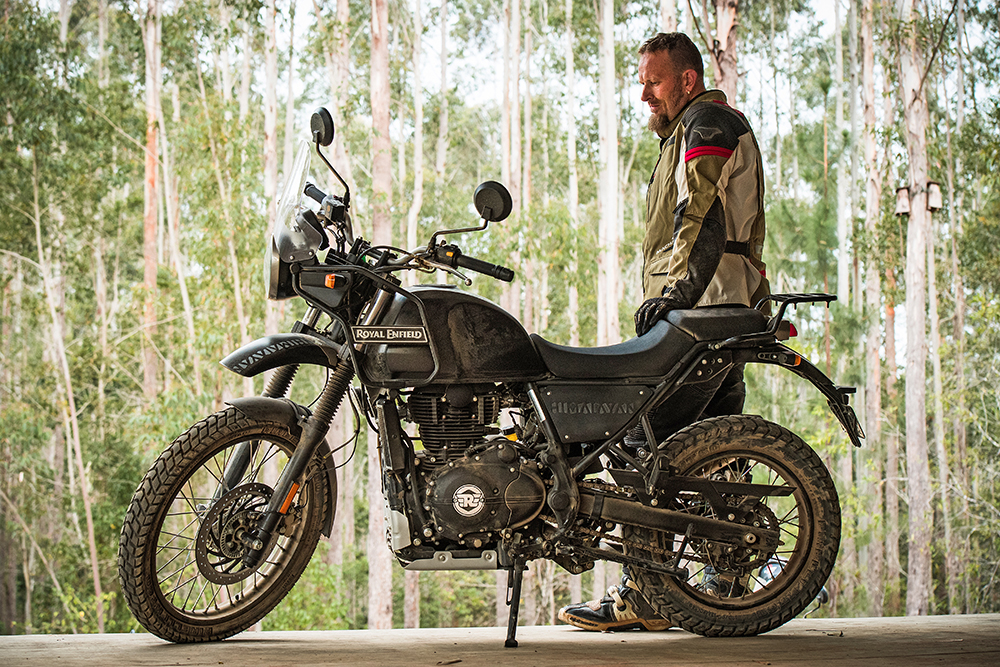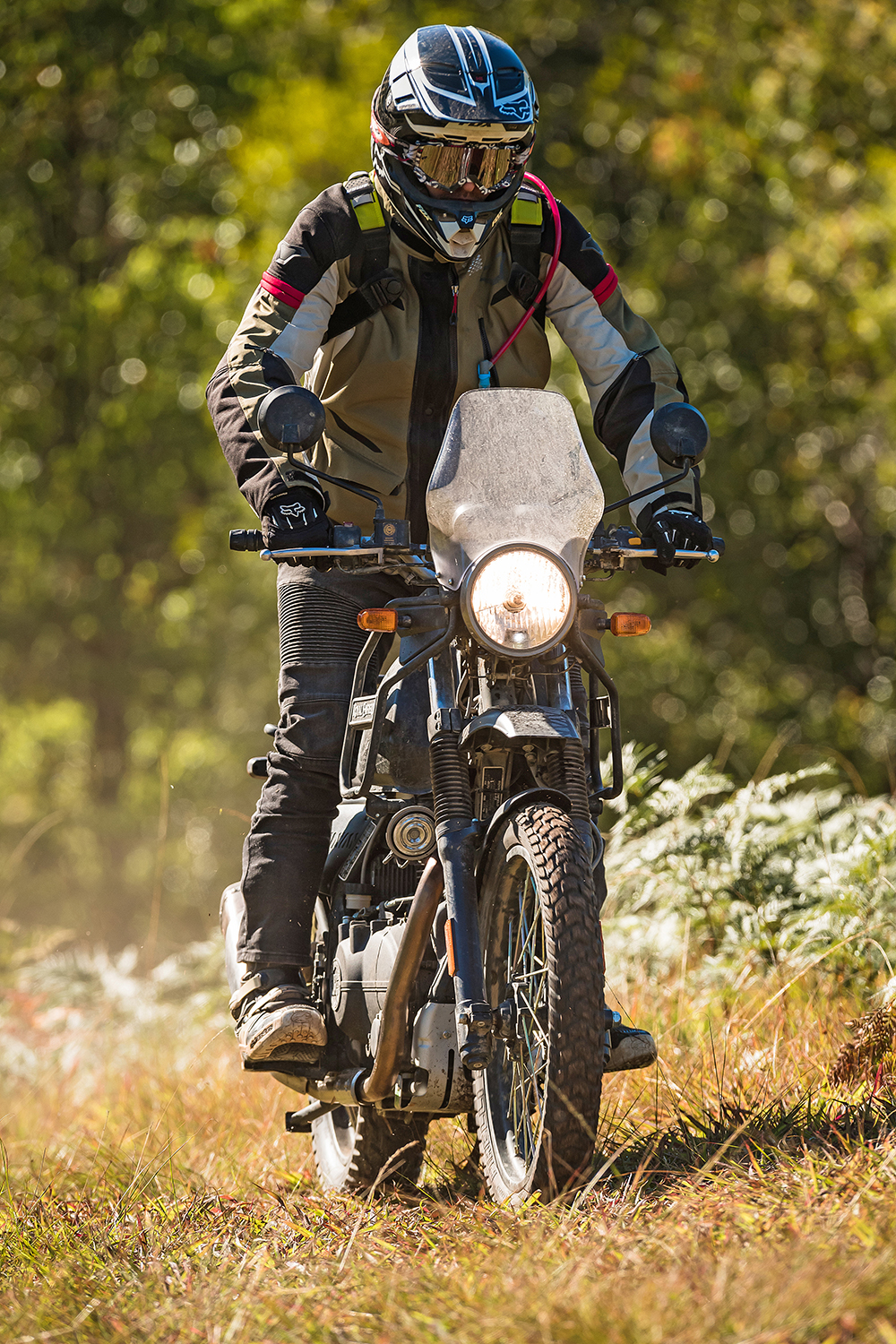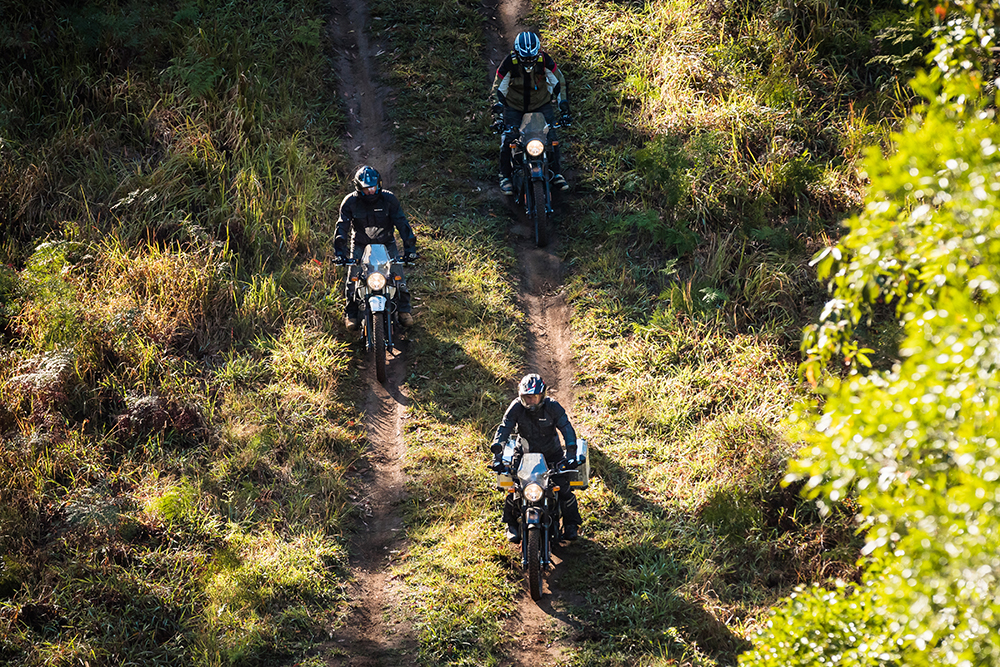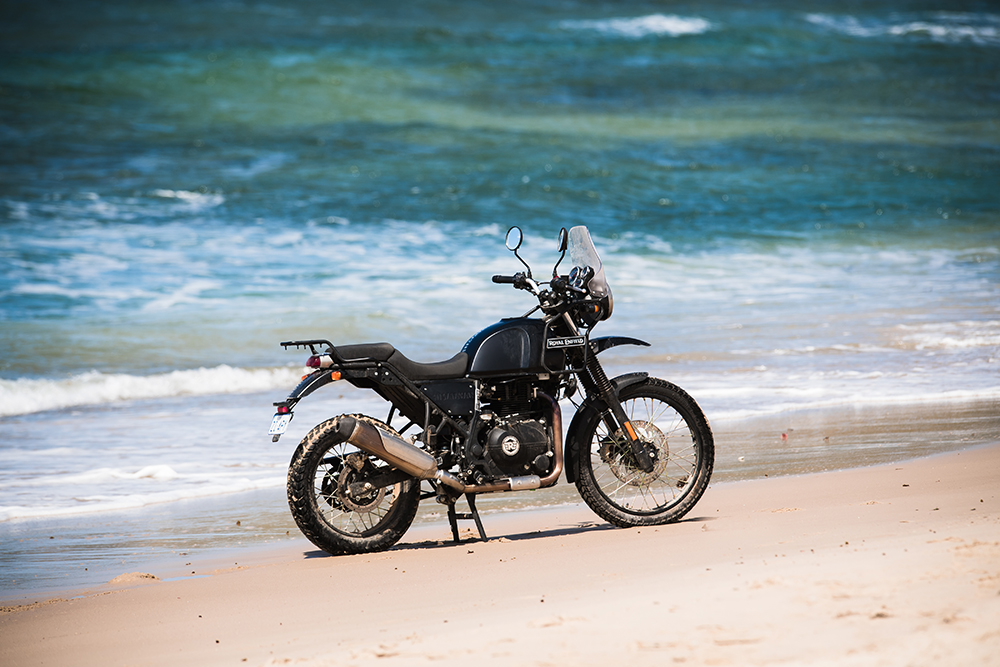It’s easy to scoff at adventure bikes that aren’t festooned with all the mod cons, but it turns out getting back to basics can be just as much fun
On paper, and unless you’re an inner-city hipster who may scale the occasional gutter, Royal Enfield’s 2020 Himalayan doesn’t promise particularly much. Certainly not in this climate of high-tech and high-powered adventure machinery, anyway.
However, everyone I know who had actually ridden one – including AMCN’s own Kel Buckley – gave them a great wrap as an easy-to-get-along-with, reliable and capable all-rounder. So, despite being a bit perplexed by its popularity, I needed to keep an open mind.
Designed and built in India and first released in Australia in 2017, the Himalayan was created as a reliable no-frills, go-anywhere machine, and this update sees the addition of electronic fuel injection and ABS brakes in order to meet Euro-4 requirements. As adventure bikes go, the Himalayan has a style all its own, and reminded me of the motorcycling equivalent of Land Rover’s Defender. It’s almost military in its appearance, with tubular-steel mounting points that envelop the front portion of the 15-litre tank and a robust rear grab rail and luggage rack, which gives it a ‘ready for rugged adventure’ look.
In this era of full-colour TFT touchscreen displays, the Enfield’s instruments look dated, but provide all the info the discerning traveller needs. The analogue speedo, tacho and fuel gauge are easy to read, as is the odo, multiple trip meters, gear position indicator, ambient temperature, time and compass displayed on LCD displays.
The clutch can’t be adjusted at the bar, so you’ll be reaching for a spanner to make clutch adjustments at engine level. The indicator switch did get stuck a couple of times and failed to cancel, but otherwise the controls work well and seem durable. The neutral light illuminates on start-up whether the bike is in neutral or not and stays on long enough to convince you to release the clutch, thinking it’s in neutral when it’s not.
Sitting between the instruments and the oh-so-retro circular headlight is a small-ish screen that does a reasonable job of launching air blast above your head rather than at it. And I’m a tall bloke.

The seating position is comfortable and the 800mm seat height makes it an attractive prospect for shorter riders. Despite the low seat height and 220mm of ground clearance, there’s plenty of legroom even for my 186cm frame and it was only after I’d been in the saddle for a couple of hours that my legs started to feel cramped. The inside of my knees did rest on the steel bars that flank the tank, leaving a bruising reminder of my time with the Himalayan.
You sit in the Himalayan rather than on it, and that hinders your ability to get your weight over the front when off road, but that’s easily resolved by standing on the ’pegs. This bit was the biggest surprise for me; riding while standing up on the ’pegs is really comfortable. For short (I asked them) and tall riders alike, the bars are at an excellent height, and the frame’s surface is flat and narrow and really easy to grip with your legs. The rubber inserts on the footpegs can be removed, too, providing better grip in off-road conditions. This combination inspires confidence and the Himalayan is happy burbling along fire trails at a moderate pace.
The only gripe with the ergonomics is with the upswept exhaust system that exits from under the right-hand side of the engine and starts its upward trajectory just behind the footpeg. ’Cos when you have feet as big as mine, not only will it burn the heel of your boot but it’ll raise your heel and put downward pressure on the large rear brake pedal, if you’re not constantly mindful of it.
The upswept muffler aids rear-wheel removal, with the easy to use centrestand making maintenance easier. On the other hand the side stand is a little too long and makes parking on uneven surfaces awkward.
The Himalayan is powered by the same long-stroke 411cc single-cylinder two-valve engine as the outgoing model, but with fueling duties now handled by electronic fuel injection rather than carbs. Despite the addition of EFI, the new Himalayan is putting out the same 18kW at 6500rpm and 32Nm of torque at 4250rpm as its predecessor. The engine is prone to stalling when it’s cold and it takes a fair while to get it up to temperature, but once warmed up the fueling is spot on. Speaking of fueling, the 15-litre tank capacity combined with the frugal claimed fuel consumption of 3.5L/100km means you won’t be stopping at the servo too frequently.
The Indian marque has gone for lazy and unstressed with the air/oil-cooled Himalayan powerplant for increased reliability, with a mass balancer keeping vibration to a minimum. At 191kgs (ready to ride) and with 18kW on tap, plus my 105kg perched on the seat, the Himalayan is just plain old slow. Overtaking at highway speeds requires a fair bit of planning, lots of room and a stiff tailwind. The gearing is fairly tall, but the agricultural feeling five-speed gearbox keeps it on the boil when you point the bike up a hill.

The engine is bolted into a half-duplex split cradle frame with 41mm non-adjustable right-way-up forks offering 200mm of travel up front, and preload-adjustable monoshock offering 180mm of travel at the rear. Despite the budget spec, the suspension at both ends does a great job of keeping the bike pointed in the right direction until you start pushing the pace upwards. With my portly dimensions, I needed the preload wound right up on the rear shock, as I dragged the centrestand constantly on the twisty road sections. The extra preload did improve things, but it still touches down earlier than it probably should. Off-road, the suspension is supple and compliant as long as you keep the pace down.
The Himalayan is fitted with a Bosch dual-channel ABS system for 2020. The system can’t be switched off, but it worked well whether on road or off. The first time you yank on the front brake you’re almost glad the Himalayan isn’t banging out more power. The twin-piston setup lacks initial bite and power, which I put down to the lack of kays on the test bike, but there was only a slight improvement by the end of the two-day ride. The single-piston rear caliper with 240mm disc works superbly, with great feel and is fantastic for leaning on while executing slow-speed manoeuvres on- or off-road.
The addition of ABS and EFI has added some pork to the package with the 2020 model’s weight creeping up by nine kilograms over the previous model, exacting a toll on the Himalayan’s lacklustre power output and braking prowess.
The 220mm of ground clearance is adequate for light off-road riding but as the speed comes up and the terrain becomes rougher you’ll hear the sturdy factory-fitted bash plate copping a pounding from trail debris. On more than one occasion I had a foot knocked off a foot peg through ruts and, like it did on the road, the centrestand came into contact with terra firma.
The Himalayan is helped along in the off-road stakes by its quality Pirelli MT-60 tyres that perform surprisingly well in the dirt and even better on the bitumen, offering good feedback in both cases. The 21-inch front and 17-inch rear tyre sizes highlights the bike’s go-anywhere intentions and means there’s a wide variety of aftermarket rubber available to suit your needs.

The build quality appears pretty good, the only area of note being after 400kms in the saddle the paint had worn off the gear lever and started to wear thin on the footpeg brackets. The bike I had for the launch also had a problem with its pillion seat rattling loose. The pillion seat also secures the rider seat in place, so I lost both seats on a couple of occasions while standing for off-road shenanigans. Of all the units on the launch, mine was the only one that suffered from a nasty case of ejector-seat, so it’s certainly not an inherent problem.
The Himalayan reminds me of the Honda XL185 I used to ride every school holidays on a relative’s property. It didn’t stop that well, it wasn’t that fast, and the suspension wasn’t the best, but it taught me to ride.
Back then, there was no technology that I could rely on to get me out of trouble, and you needed to concentrate on riding well, forcing you into the full experience of riding. If it broke, I could fix it (or nag my uncle to), and it was robust enough that it didn’t need to be constantly pampered. Those were some of the best times of my riding life and I got a little bit of that feeling back while riding the Himalayan.
You either get the Himalayan or you don’t. And after spending two days riding the Himalayan in all sorts of conditions, I now get it.
There’ll be hardcore adventure riders that want all the latest rider aides and monstrous horsepower, and they’ll point fingers and say ‘that’s not a real adventure bike, my $20,000+ bike is so much more capable,’ and in many ways they’re exactly right. But Royal Enfield didn’t set out to make anything but a versatile, reliable and affordable adventure-style motorcycle, and it has nailed the brief.
If you’re someone who’s fast (or even moderately fast) through the bush, I don’t think the Himalayan is for you and Royal Enfield didn’t have you in mind when it designed it.
But people who want to get out and see the remote corners of the world at a slower pace, on a bike that offers reliability, easy maintenance and a unique styling, it’s more than capable of doing that.

TEST: PETE VORST PHOTOGRAPHY CONRAD TAYLOR